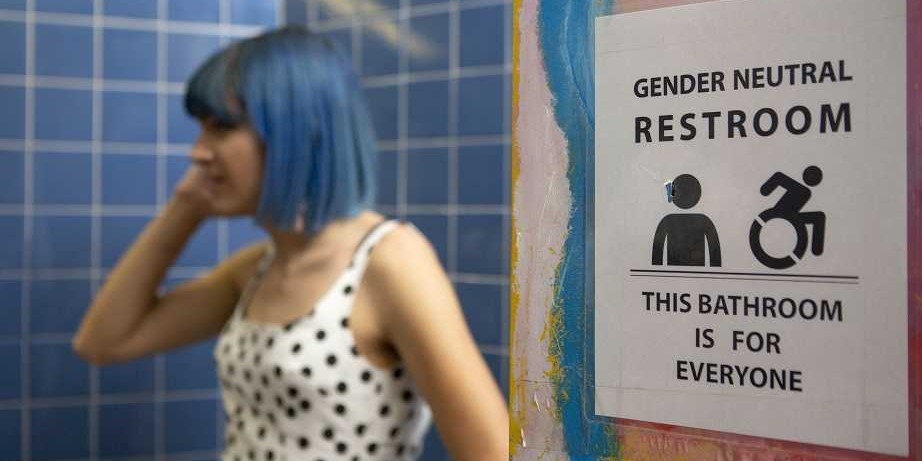The Fight for Gender-Affirming Care

As of February 2025, 574 bills that restrict the rights of transgender people have been introduced in 48 states.1 Many of these bills seek to limit the inclusion of transgender and nonbinary people, including limiting educational discussions (both anti-LGBTQ+ and gender-focused) and limitations on access to public places or services (e.g., bathrooms). Twenty-five states have now banned best practice medical and surgical treatments for transgender youth2. More notably, in six of these states, providing some of these best practice treatments is now a felony2.
These legislative actions directly contradict the clear positions of leading medical groups, including but not limited to the American Medical Association, the American Academy of Pediatrics, and the World Health Organization, all of which support access to gender-affirming care. The impact of these anti-transgender laws is devastating. Young transgender and nonbinary people living in these states with bans on gender-affirming care are suffering, with suicide attempts spiking by 7% to 72% over the prior year.3 Transgender adults are not immune to the effects of these regressive laws, as they are also experiencing increased rates of depression and anxiety.
Furthermore, while these laws are aimed at impacting transgender and gender diverse populations, they are negatively impacting intersex populations as well. Many of these laws restrict gender-affirming care for transgender, gender nonconforming, and nonbinary (TGD) people, but there are exceptions within these laws that allow non-consensual, non-medically necessary, usually genital-based, surgeries on intersex infants and children to continue. Per the Human Rights Watch, “These surgeries have been deemed human rights violations by the United Nations High Commissioner for Human Rights, the World Health Organization, and other authorities.”6
Not only are transgender laws impacting intersex youth, but recent government orders are as well. In January 2025, the United States government released an executive order that redefined what the words “sex,” “male,” and “female” mean.7 InterACT Advocates for Intersex Youth issued a statement that this order “disrespects the complexity of gender by reducing it to the production of eggs and sperm, entirely fails to consider the existence of intersex people.”5
InterACT further mentions that even cisgender intersex folx may be impacted by this Executive Order stating “Notably, the Executive Order may invalidate a cisgender intersex person’s understanding of their own gender, too. A woman with Complete Androgen Insensitivity (CAIS) may be assigned female at birth, and identify as a woman all her life while having internal testes – yet the Order would define her sex by her gonads and the reproductive cells they produce.”5
Intersex folx historically have had their existence and identities erased, pathologized, and stigmatized. InterACT says that “All people, including young intersex and transgender people, deserve to be respected for who they are.”5 The remote course, Intersex Patients: Rehab and Inclusive Care led by Molly O'Brien-Horn, PT, DPT, CLT, addresses how to be an ally in healthcare to and how to provide better, intersex-affirming healthcare to Intersex folx. The next course offering is on May 3, 2025.
 The American Civil Liberties Union (ACLU) published a research brief on the impacts of these laws and policies stating in part, “These anti-transgender laws are accomplishing exactly what they were designed to do, i.e. prevent youth from obtaining gender-affirming care, reduce gender-affirming care access for adults, prevent transgender and nonbinary people from using correct facilities or participating in sports, or censor education. These impacts are concerning enough; however, the collateral consequences of these laws are also devastating. A growing body of research indicates that these restrictive laws and the surrounding rhetoric are instilling fear, reducing safety, and increasing violence against LGBTQ+ people and their allies.“ Although it can seem frightening and daunting to step up and be an ally, it is what the world needs of all of us, especially in unprecedented times.
The American Civil Liberties Union (ACLU) published a research brief on the impacts of these laws and policies stating in part, “These anti-transgender laws are accomplishing exactly what they were designed to do, i.e. prevent youth from obtaining gender-affirming care, reduce gender-affirming care access for adults, prevent transgender and nonbinary people from using correct facilities or participating in sports, or censor education. These impacts are concerning enough; however, the collateral consequences of these laws are also devastating. A growing body of research indicates that these restrictive laws and the surrounding rhetoric are instilling fear, reducing safety, and increasing violence against LGBTQ+ people and their allies.“ Although it can seem frightening and daunting to step up and be an ally, it is what the world needs of all of us, especially in unprecedented times.
As access to vital care is being challenged, pelvic rehabilitation practitioners have a powerful role in supporting transgender, intersex, and gender diverse people. We can be thoughtful listeners to our patients’ stories, and we can use their chosen names and pronouns. If you’re someone new to chosen names and pronouns, be reassured that no one expects perfection from you when you start out. We all get better with practice. If you need a refresher, check out this simple refresher from the Gay, Lesbian & Straight Education Network. The Herman & Wallace course, Inclusive Care for Gender and Sexual Minorities instructed by Brianna Durand, is also an excellent starting point in learning up-to-date, in-depth knowledge of the various terminology while emphasizing clinical interactions, available research, and professional accountability.
When it comes to pelvic health interventions for trans people who have not had genital surgery, I often encourage clinicians to focus on the basics. The vast majority of pelvic health concerns improve with breathing activities, trunk coordination and strengthening, and mindfulness training. Feel empowered to reach out to rehabilitation forums or mentors for assistance in selecting or adjusting interventions. Also, know who the prescribing medical providers are in your community. Some patients need more testing than PTs and OTs can do. Make yourself part of a strong team.
Clinicians who are ready to be leaders in gender-affirming rehabilitation can take additional training to better understand the nuances of surgery recoveries and interventions. The remote course, Transgender Health for the Rehab Professional: Genital Gender Affirming Surgery Considerations, led by Sandra Gallagher, PT, DPT, WCS and Ken McGee, PT, DPT is a great step. Typical coursework covers dilator progression after vaginoplasty, return to activity after gender-affirming surgery, and understanding the impacts of hormones on pelvic function. The next offering is on April 12, 2025.
If you are looking for more ways to get involved, consider joining the PT Proud Special Interest Group of the Academy of Leadership and Innovation. Protecting and advancing gender-affirming care requires advocacy outside the clinic. The current legislative climate might seem daunting, but the recent court rulings favoring bodily autonomy and the proliferation of shield law for healthcare workers providing gender-affirming care is heartening.
Each of us has the power to make a meaningful difference in the lives of transgender, intersex, and gender-diverse clients. Let’s commit to our ethical duty of justice—ensuring fair and equitable treatment for all, regardless of gender identity—and beneficence—promoting the well-being of every individual we serve.

References
- 2025 Anti-Trans Bills: Trans legislation tracker. 2025 Anti-Trans Bills: Trans Legislation Tracker. Accessed February 22, 2025. https://translegislation.com/.
- Bans on Best Practice Medical Care for Transgender Youth. Movement Advancement Project. February 2025. Accessed February 22, 2025. https://www.lgbtmap.org/equality-maps/healthcare_youth_medical_care_bans.
- American Civil Liberties Union. (2024, September 11). The Impacts of Anti-Transgender Laws and Policies: Evidence from Empirical Research. https://www.aclu.org/publications/the-impacts-of-anti-transgender-laws-and-policies-evidence-from-empirical-
- Lee WY, Hobbs JN, Hobaica S, DeChants JP, Price MN, Nath R. State-level anti-transgender laws increase past-year suicide attempts among transgender and non-binary young people in the USA. Nat Hum Behav. 2024;8(11):2096-2106.
- InterACT Advocates for Intersex Youth. (2025, January 21). Trump’s Executive Order Ignores Science to Push Discriminatory Agenda. https://interactadvocates.org/trumps-executive-order-ignores-science-to-push-discriminatory-agenda/.
- Human Rights Watch. (2022, October 26). S. Anti-Trans Bills Also Harm Intersex Children. https://www.hrw.org/news/2022/10/26/us-anti-trans-bills-also-harm-intersex-children.
- United States Presidential Actions. (2025, January 20). Defending Women from Gender Ideology Extremism and Restoring Biological Truth to the Federal Government Executive Order. https://www.whitehouse.gov/presidential-actions/2025/01/defending-women-from-gender-ideology-extremism-and-restoring-biological-truth-to-the-federal-government/.
By accepting you will be accessing a service provided by a third-party external to https://hermanwallace.com/








































